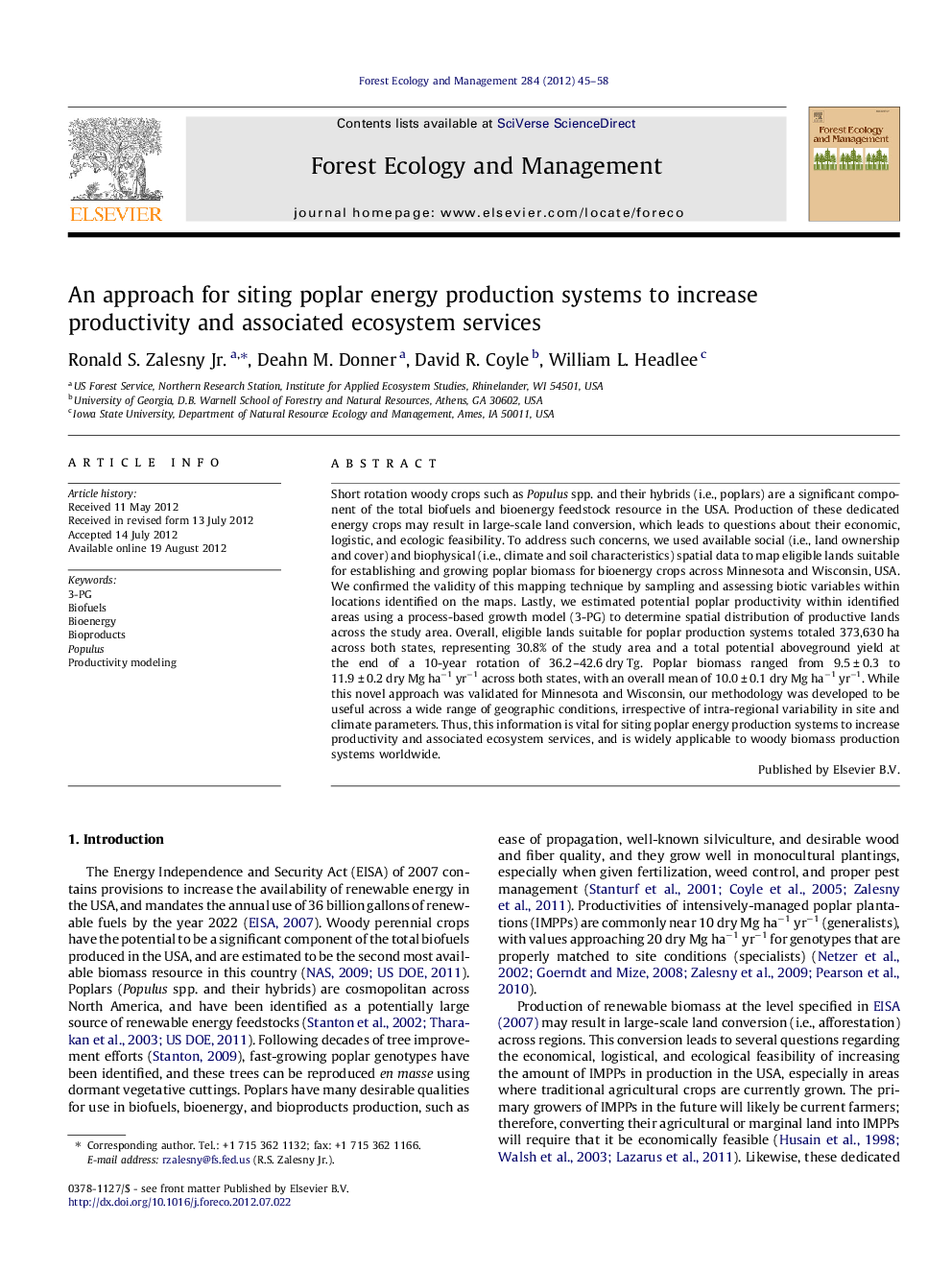| کد مقاله | کد نشریه | سال انتشار | مقاله انگلیسی | نسخه تمام متن |
|---|---|---|---|---|
| 87263 | 159242 | 2012 | 14 صفحه PDF | دانلود رایگان |

Short rotation woody crops such as Populus spp. and their hybrids (i.e., poplars) are a significant component of the total biofuels and bioenergy feedstock resource in the USA. Production of these dedicated energy crops may result in large-scale land conversion, which leads to questions about their economic, logistic, and ecologic feasibility. To address such concerns, we used available social (i.e., land ownership and cover) and biophysical (i.e., climate and soil characteristics) spatial data to map eligible lands suitable for establishing and growing poplar biomass for bioenergy crops across Minnesota and Wisconsin, USA. We confirmed the validity of this mapping technique by sampling and assessing biotic variables within locations identified on the maps. Lastly, we estimated potential poplar productivity within identified areas using a process-based growth model (3-PG) to determine spatial distribution of productive lands across the study area. Overall, eligible lands suitable for poplar production systems totaled 373,630 ha across both states, representing 30.8% of the study area and a total potential aboveground yield at the end of a 10-year rotation of 36.2–42.6 dry Tg. Poplar biomass ranged from 9.5 ± 0.3 to 11.9 ± 0.2 dry Mg ha−1 yr−1 across both states, with an overall mean of 10.0 ± 0.1 dry Mg ha−1 yr−1. While this novel approach was validated for Minnesota and Wisconsin, our methodology was developed to be useful across a wide range of geographic conditions, irrespective of intra-regional variability in site and climate parameters. Thus, this information is vital for siting poplar energy production systems to increase productivity and associated ecosystem services, and is widely applicable to woody biomass production systems worldwide.
► Lands suitable for poplar production in Minnesota and Wisconsin were identified.
► Biophysical spatial data, site information, and 3PG productivities were integrated.
► Lands suitable for poplar production systems totaled 373,630 ha across both states.
► Total aboveground yield at the end of a 10-year rotation averaged 40.7 dry Tg.
► Poplar biomass ranged from 9.5 to 11.9 dry Mg ha−1 yr−1 across both states.
Journal: Forest Ecology and Management - Volume 284, 15 November 2012, Pages 45–58